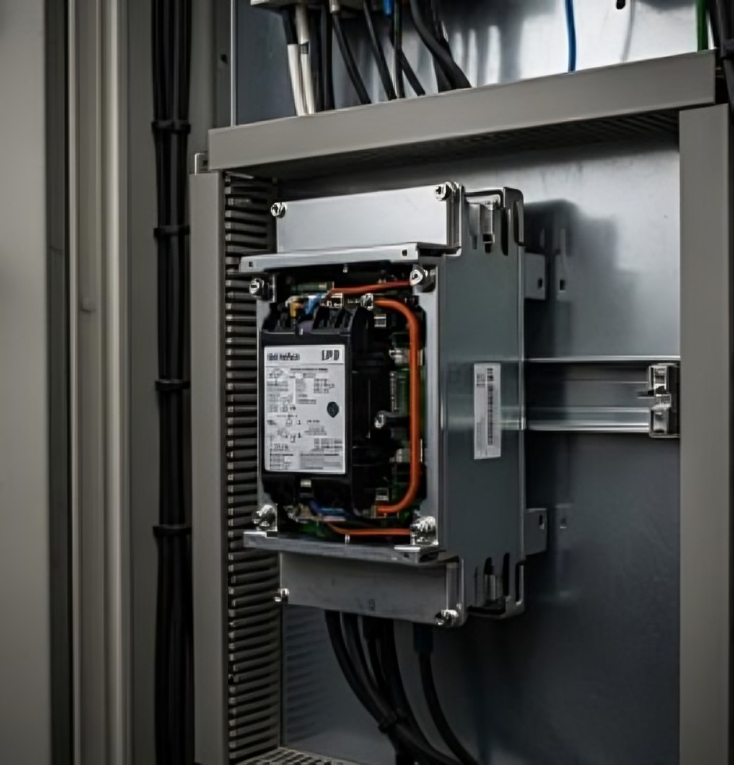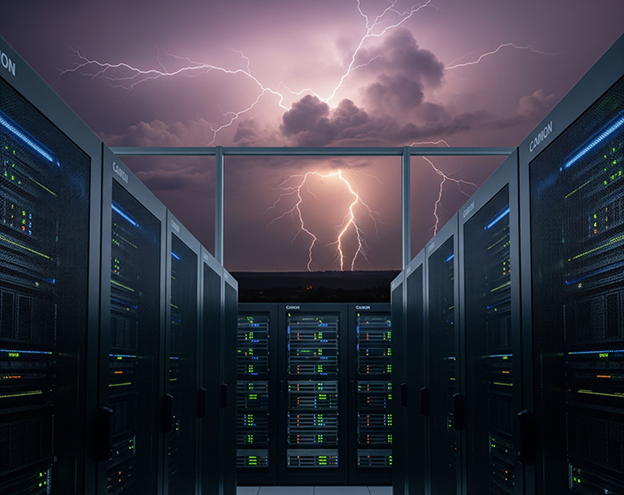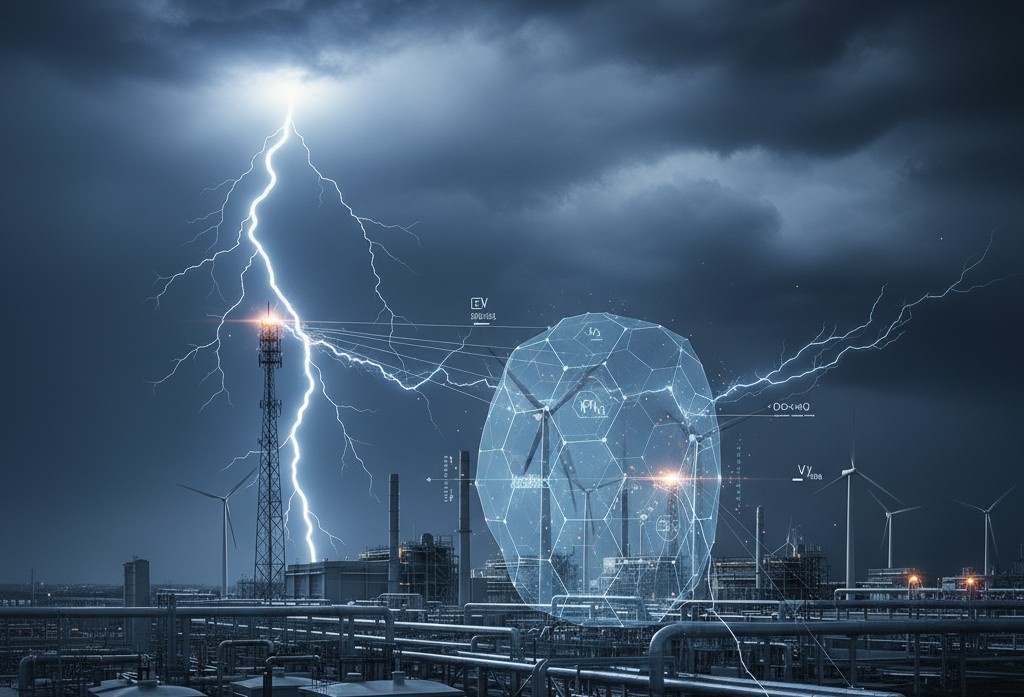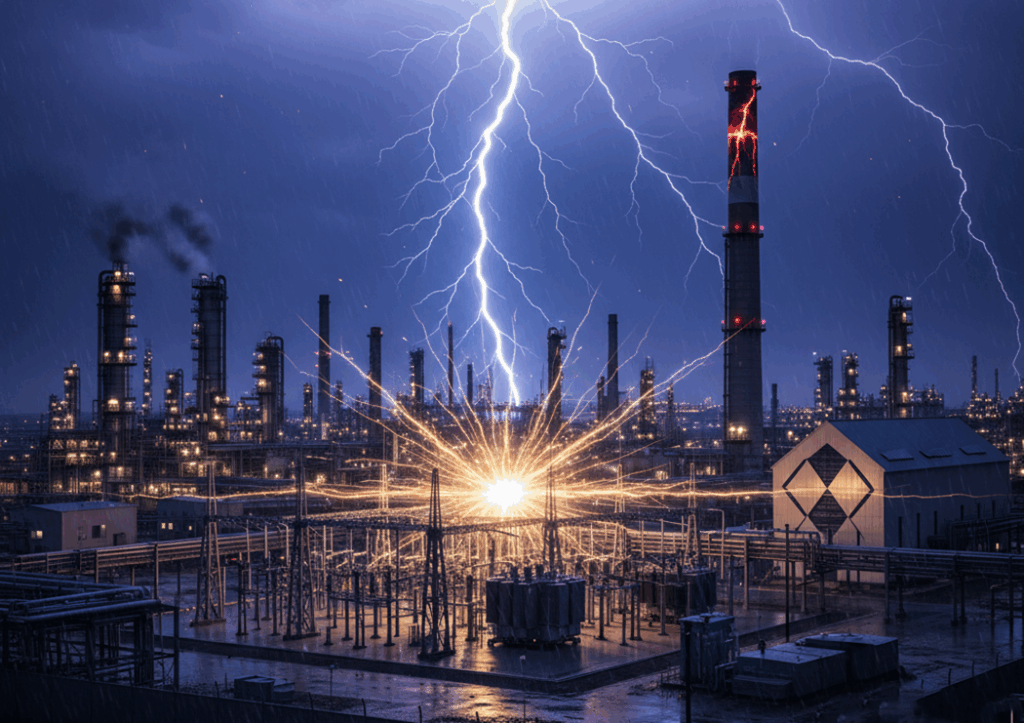In our increasingly interconnected world, data centers and critical infrastructure facilities serve as the indispensable backbone of digital society, powering everything from cloud computing to global communications. However, these high-density, network-intensive operations face a pervasive and escalating threat: lightning. With climate change driving increased lightning activity and more frequent severe weather events, relying on basic protection or raw strike data is no longer sufficient. True operational resilience demands a proactive, strategic approach that begins with a comprehensive lightning risk assessment and culminates in a robust lightning protection design.
The Intensifying Threat and Cost of Complacency
A single lightning strike can wreak catastrophic financial and operational havoc on data centers and critical infrastructure. The consequences extend far beyond immediate physical damage, impacting business continuity, client trust, and operational efficiency.
Downtime and Service Disruptions: Lightning-induced power surges can lead to equipment failures, causing critical services to go offline. The average cost of data center downtime across industries is approximately $7,900 per minute (DataPod.com). For major facilities, this can translate into hundreds of thousands, if not millions, of dollars per hour. The Uptime Institute’s Annual Outages Analysis 2023 reported that 70% of data center outage incidents cost $100,000 or more, with 25% exceeding $1 million. In 2021 alone, Amazon lost $34 million, Facebook lost $100 million, and Alibaba lost $1 billion in revenue due to data center outages.
Equipment Damage: Lightning can cause substantial damage to servers, storage systems, networking devices, UPS systems, and cooling units, leading to costly repairs or replacements and potential data loss.
Data Loss and Integrity: Electrical surges can corrupt or destroy sensitive and valuable data, compromising its integrity and availability, which can have severe legal, financial, and reputational consequences. For businesses without robust backup and recovery solutions, this can mean irretrievable data loss.
Safety Hazards: Lightning strikes pose direct safety risks to personnel through electrical discharges, fires, or other accidents during thunderstorms. A 2017 lightning strike on a Florida hospital caused a fire, necessitating the transfer of 209 patients in six hours.
Reputational Damage: Unplanned outages erode customer trust, making reliability paramount in competitive markets and potentially hindering new client acquisition.
Broader Infrastructure Impact: Lightning strikes are a major cause of outages in electrical distribution systems, with up to 50% of all transmission line faults attributed to lightning strikes. These facilities present multiple pathways for lightning’s destructive energy, including direct strikes, surges through power and communication lines, and ground potential rise.
The Foundational Step: Comprehensive Lightning Risk Assessment
Many organizations mistakenly believe that simply installing basic lightning protection hardware is sufficient. While essential components are crucial for mitigating direct structural damage, they don’t address the full spectrum of lightning-related risks—particularly the insidious threat of electrical surges damaging sensitive electronics. Similarly, relying solely on raw lightning strike data provides only a partial picture, failing to quantify the specific risk to your facility.
The crucial first step in mitigating these threats is a comprehensive lightning risk assessment that moves beyond simple hardware installation or weather monitoring to a holistic evaluation of actual vulnerability and potential consequences.
Embracing International Standards: IEC 62305-2 and NFPA 780
International standards like IEC 62305-2 (“Protection against lightning — Part 2: Risk management”) and NFPA 780 provide globally recognized frameworks for conducting systematic lightning risk assessments. These standards guide users through evaluating numerous factors, including:
- Facility Characteristics: Location, dimensions, construction materials, and surrounding environment
- Incoming Lines: Power lines, communication cables, their routing, and shielding
- Internal Systems: Sensitivity of electronic equipment, cabling, and existing surge protection
- Consequences of Loss: Risk to human life, essential public services, cultural heritage, and economic loss
- Tolerable Risk Levels: Defining acceptable risk for each type of loss based on facility criticality
By following these standards, organizations can shift from guesswork to a data-driven understanding of their specific lightning threat profile. If the calculated risk exceeds the tolerable level, the standards mandate the selection and implementation of appropriate protection measures.
Leveraging AI-Powered Risk Assessment Technology
At Skytree Scientific, we are leading the transformation of lightning risk management by providing advanced tools for this critical initial phase. Our LRA Plus™ platform is an AI-integrated solution that streamlines lightning risk assessments by up to 90%, helping users deliver compliant, data-driven decisions in a fraction of the time.
LRA Plus offers AI-powered lightning protection recommendations by automating complex calculations and analyzing lightning data and risk factors to provide insights on risk mitigation and design optimization. It integrates continuously updated lightning strike data, flash density, and strike-point density metrics, enabling users to compare historical and current data for comprehensive insights. Furthermore, our platform leverages advanced Large Language Models (LLMs) to quickly and accurately generate comprehensive, industry-compliant lightning risk assessment reports in multiple languages.
It is crucial to emphasize that while our platform provides highly accurate lightning risk assessment with AI-powered recommendations, this is not a complete lightning protection design. Our software provides indispensable, data-driven insights, making it an advanced lightning risk assessment tool for engineers. It empowers engineers to make optimized decisions, laying the essential groundwork upon which a complete physical lightning protection design can be meticulously built.
Components of a Complete Lightning Protection System Design
A complete lightning protection design for data centers and critical infrastructure extends beyond risk assessment to the thoughtful implementation of integrated physical and electrical protection measures. This comprehensive system typically comprises two main parts: the external lightning protection system and the internal lightning protection system.
1. External Lightning Protection System (LPS)
This system intercepts the lightning flash, conducts the current safely to ground, and dissipates it into the earth. Key components include:
Air-Termination System: Elements like lightning rods, meshed conductors, or catenary wires are positioned at the highest points of a structure to intercept lightning strikes and safely channel the energy. The “rolling sphere method” is a common design technique to determine optimal placement and ensures that the air-terminations capture lightning flashes effectively based on the desired lightning protection level.

Down-Conductors: These conductors provide multiple parallel, low-impedance paths to safely guide the lightning current from the air-termination system to the earthing system. Proper spacing and direct routing minimize side flashing and reduce electromagnetic radiation effects.
Earthing System: Also known as grounding systems, these are critical for safely dissipating the lightning current into the earth, maintaining a low impedance network, and minimizing dangerous touch and step potentials for personnel. A well-designed grounding system provides a low-resistance path to earth, ensuring that any electrical surge from a lightning strike is safely directed away from sensitive equipment.

2. Internal Lightning Protection System (LPS)
This system prevents dangerous sparking within the structure and protects sensitive internal equipment from surges. It consists of:
Equipotential Bonding: This involves electrically connecting all incoming metallic services (water pipes, gas lines, power lines, communication cables) and large internal metallic items (e.g., elevator rails, ventilation ducts) to the LPS at ground level. This minimizes hazardous potential differences that could cause dangerous sparking or flashovers.
Surge Protective Devices (SPDs): SPDs are crucial for safeguarding sensitive electronic equipment from sudden electrical surges caused by lightning. They act as a barrier, diverting excess voltage away from critical infrastructure. Different classes of SPDs are used to provide coordinated protection throughout the facility:
- Class I for service entrances with structural LPS
- Class II for secondary protection or service entrances without LPS
- Class III for localized equipment protection

Proper selection and installation of SPDs are vital for preventing damage and ensuring operational continuity. Standards like BS EN 50310 and IEC 61000-5 outline requirements for SPD integration.
Why a Comprehensive Design is Crucial for Resilience
A robust, meticulously engineered lightning protection design provides tangible benefits far exceeding basic protective measures. By building upon the precise lightning risk assessment provided by tools like Skytree Scientific’s LRA Plus, organizations can achieve:
Quantified Risk Understanding: Moving beyond vague awareness to a calculated, objective understanding of specific risks and vulnerabilities.
Optimized Protection Strategy: Identifying critical vulnerabilities ensures that resources are allocated to the most effective lightning mitigation measures, avoiding both over-spending and under-protection of critical assets.
Informed Lightning Protection Design: Directing engineers to tailor LPS and surge protection strategies precisely to identified risks and facility layouts, ensuring compliance and effectiveness before engaging with lightning protection companies for installation.
Enhanced Operational Resilience: Proactively addressing identified vulnerabilities significantly reduces the likelihood and impact of lightning-induced downtime, bolstering overall reliability.
Improved Compliance and Insurance Posture: A formal assessment and design following international standards demonstrate due diligence, potentially strengthening relationships with insurers and leading to more favorable terms.
Foundation for Future Adaptation: The initial assessment provides a baseline, allowing the lightning protection design to be revisited and updated as the facility expands or external factors change, ensuring ongoing protection.
The Strategic Approach: Assessment to Implementation
Think of comprehensive lightning protection like building a fortress: Skytree Scientific’s LRA Plus is the master strategist and reconnaissance expert, meticulously mapping the battleground, identifying potential weak points, and recommending the most effective defensive tactics based on historical data. However, it’s the skilled architects and builders who then take those plans and construct the actual walls, towers, and moats – the complete lightning protection design – that stand as a formidable defense against the storm.
While our LRA Plus provides the analytical power for initial assessment and AI-powered recommendations, the full implementation requires the expertise of engineers to translate these insights into a complete, physical lightning protection design. This comprehensive process ensures that critical infrastructure, such as data centers, remains safeguarded against the unpredictable and increasing threat of lightning strikes.
Securing Our Digital Future
In the high-stakes environment of data centers and critical infrastructure, assuming basic protection is sufficient against lightning is a gamble no organization can afford. The potential for catastrophic downtime, data loss, and financial ruin necessitates a decisive shift towards proactive, comprehensive lightning risk management.
By embracing systematic approaches outlined in standards like IEC 62305-2 and leveraging sophisticated AI-powered platforms such as Skytree Scientific’s LRA Plus™, operators can move beyond reactive measures. This enables the design and implementation of targeted, effective lightning mitigation strategies, ensuring the resilience and uninterrupted operation of the critical infrastructure that powers our digital lives.
The journey from vulnerability to resilience begins with understanding your specific risks through comprehensive assessment, then progresses to implementing a complete protection design tailored to your facility’s unique characteristics and requirements. In our increasingly digital world, this systematic approach is not just recommended – it’s essential for protecting the backbone of our connected society.






